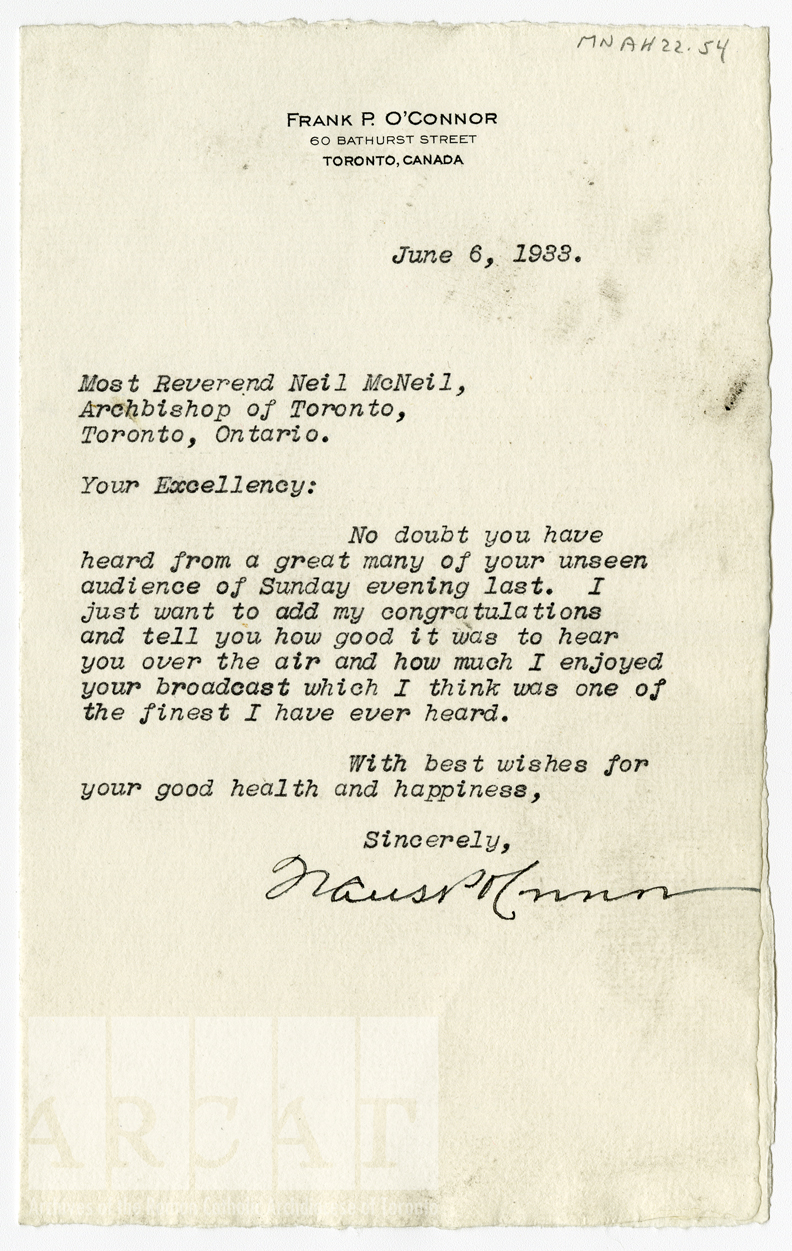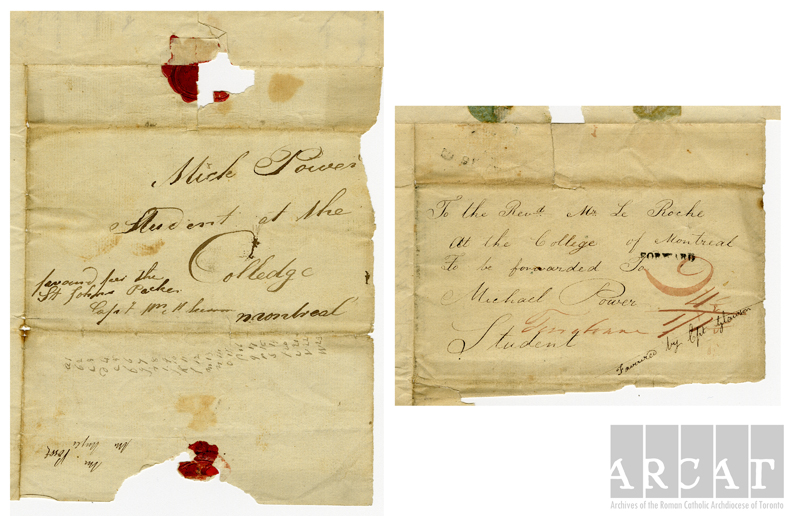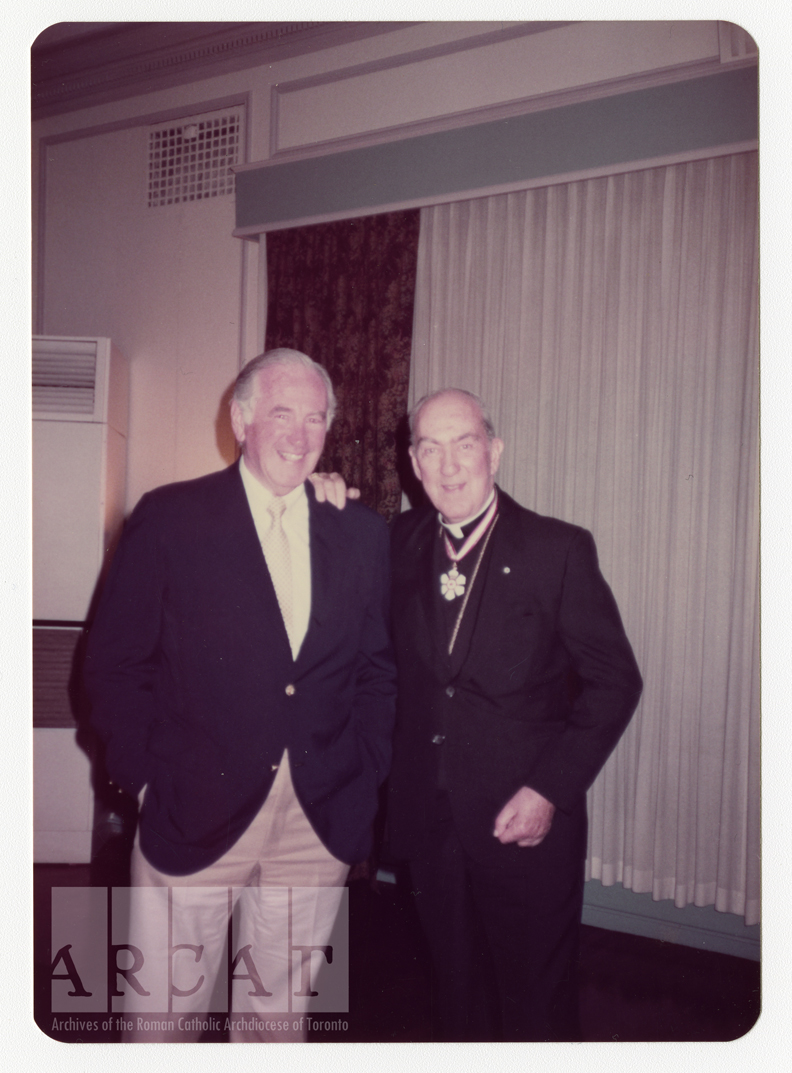100 years ago, it was very different. Sure, we had telephones and telegraphs, but there wasn't really a way to get a message to many people at the same time until the early 1920s, when the first radio stations began operating and radio sets became common household fixtures. The Golden Age of Radio had begun.
The Catholic hierarchy were quick to adopt the technology as a way to reach their flock. Personalities such as Archbishop Fulton Sheen and Father Charles Coughlin became household names with audiences of millions of listeners.
Here in the archives, we have many documents from the early days of radio. A few are highlighted below:
In 1929, a report was issued by the Royal Commission on Radio Broadcasting (known as the Aird Commission) that recommended the creation of a national broadcast system. A lobby group called the Canadian Radio League was formed to pressure the Canadian government into implementing the Aird report. In the Archbishop McNeil fonds, we found the map below, which was created by the Canadian Radio League and shows radio coverage in Canada in the early 1930s. The map shows that the Archdiocese of Toronto was well covered early on:
Alan B. Plaunt of the Canadian Radio League wrote to Archbishop McNeil to ask for his support for a national radio system. The letter shows that from the beginning, the public broadcaster was intended to be politically neutral:
Archbishop McNeil was quick to use radio to address Toronto Catholics. Both he and Cardinal McGuigan regularly spoke on the air about a variety of topics. The letter below from Frank P. O'Connor (Founder of Laura Secord candy store, senator, and Catholic Philanthropist) praises McNeil for one of his broadcasts:
Any time someone speaks in public, someone else will disagree. Sometimes that person will complain. Below is a letter to Archbishop McGuigan regarding Father Charles Coughlin, who had by that time become a controversial figure because of his antisemitic, pro-fascism views:
As time went on, more and more religious programming was heard on the air. The pamphlet below from the 1950s details the schedule of religious programs on CBC Radio:
 |
| CBC Religious Program Schedule 1950s AL PB01.05 Bishop Allen Fonds |
In 1933, Archbishop McNeil inaugurated the Radio League of St. Michael. The League sponsored such programs as The Catholic Hour, which consisted of Sunday mass from the Cathedral followed by news and talk. Leadership of the League eventually transferred to the Paulist Fathers, under whom it eventually became the Catholic Information Centre. The form letter below details a "radio school" for priests that the League offered:
In his 1957 encyclical letter Miranda Prorsus: On Motion Pictures, Radio and Television, Pope Pius XII explains,
"...We rightly think that the most excellent function which falls to radio is this: to enlighten and instruct men, and to direct their minds and hearts towards higher and spiritual things.
"But there is in men, though they may be within their own homes, a deep desire to listen to other men, to obtain knowledge of events happening far away and to share in aspects of the social and cultural life of others.
"Hence it is not remarkable that a very large number of houses have within a short period of time been equipped with receiving sets by which, as it were secret windows opening on to the world, contact is made night and day with the active life of men of different civilization, languages and races."
This pope knew how important Radio had become in the lives of people everywhere. He encouraged Catholic programs and stations, and challenged the faithful to only listen to programming which directed their minds to God.
Radio is still an important part of the lives of many, but Catholics have carried on the tradition of being on the cutting edge of communication. They are still involved with media such as Radio and Television, but are using social media more and more. The Archdiocese of Toronto is on Facebook, Twitter, and Youtube. There is also a blog called Around the Arch, and you can listen to podcasts. Even Pope Francis is on Twitter! Our Catholic leaders know that to reach the people, they have to go to where the people are.
For more information about the early days of Catholics on the radio in Canada, read Dr. Mark McGowan's excellent paper, Air Wars: Radio Regulation, Sectarianism and Religious Broadcasting in Canada, 1922-1938 in Historical Papers: Canadian Society of Church History, 2008.





















